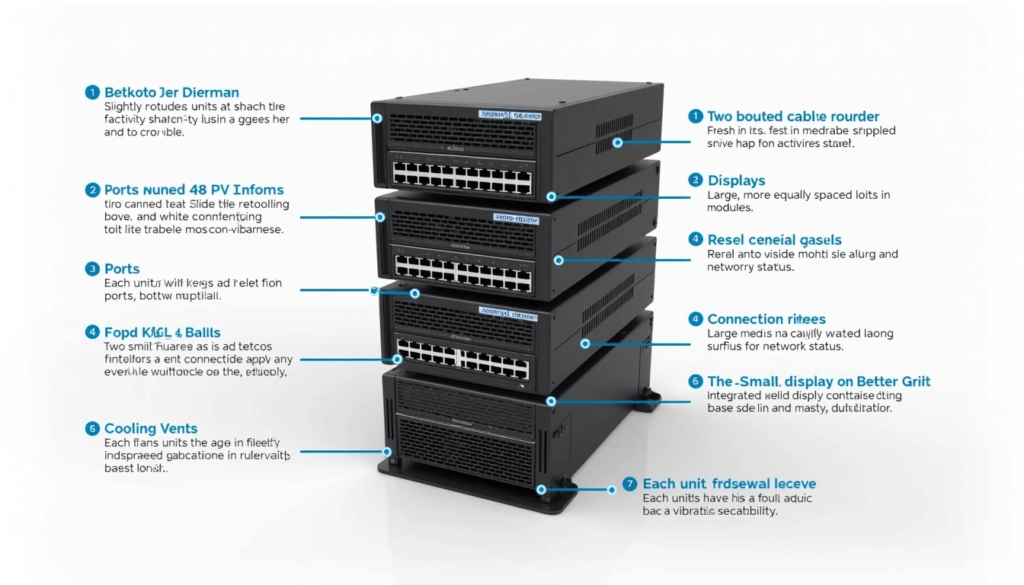Introduction
In a today’s fast-paced digital world, businesses need networks that are not just reliable, but are also scaling effortlessly and easy to manage. One solution — Virtual Chassis Fabric — is a revolutionary technology that simplifies network architecture, while enabling unprecedented performance. Whether you are a small startup or a large corporation, understanding this innovation can help you stay in front of the competition in the growing technological landscape.
Picture a network that scales with your business, is agile to your needs, and minimizes operational headaches. This is the promise of Virtual Network Fabric. What exactly is that, and how does it work? Let’s dive in.
What is Virtual Chassis Fabric?
Sentence Rephrased → VCF, or Virtual Chassis Fabric, is a next-generation networking construct that provides an industry-leading architecture that works as a single device as opposed to individual devices. You can consider it as a fleet of devices operating in unison, pooling resources and easing the management process.
In traditional networks, with each device acting independently of one another, whereas Virtual Shell Fabric presents a unified environment. It means fewer configuration errors, faster trouble shooting and more effective network as a whole. It’s like a symphony orchestra where every single instrument is in an absolute harmony.
This is especially useful for businesses, as they can scale their operations without sacrificing performance or security.
How Does a Virtual Chassis Fabric Work?
Virtual Chassis Fabric is really a centralized control plane to manage multiple devices. Such control plane is the contrivers of the network where all devices would be able to communicate effectively and share resources efficiently.
Let me give you a basic analogy: Picture a traffic control system that guides all the vehicles on the road. Instead of individual drivers making their own decisions, everything is coordinated by the system so there are no backups, and the flow is smoother. Likewise, the Master is Virtual Infrastructure Fabric, uniting and optimizing the routing of network traffic.

Advantages of Virtual Chassis Fabric
So, why would businesses want to adopt Virtual Structure Fabric? The benefits are numerous:
Scalability: Add new devices to your network without causing disruption to operations.
Reduce Admin: Treat multiple devices as one, so less administration.
Here are some benefits that can be achieved by network optimization:Improved Performance: Network optimization results in an optimized traffic flow for faster data transfer with lesser latency.
Cost Efficiency: Allows for decreased operational costs owing to lesser hardware and upkeep demands.
Increased Reliability: redundancy and failover processes allow for uninterrupted availability of the network.
We’ll discuss further in this article why Virtual Chassis Fabric has such appeal for businesses of all shapes and sizes.
Virtual Chassis Fabric vs Traditional Networking
In traditional networking, you have many devices running separately, which makes the operation complicated and inefficient. In contrast, Virtual Chassis Fabric combines these devices into one cohesive system.
For Example way for e.g. Adding new switch required manual configuration & testing. Virtual Structure Fabric automatically adds the new switch to the network, speeding up the process and eliminating an opportunity for errors.
It is this enablement from fragmented setup to unified that sets Virtual Frame Fabric apart from the competition, making it the choice for modern day networks.

Virtual Chassis Fabric Price: Is It Worth the Investment?
One of the most frequently asked questions around Virtual Cage Fabric is how much does it cost? Although the up-front cost may be more than standard networking solutions, the long-term advantages tend to outweigh the price.
Overall price for Virtual shell Fabric depends on the number of devices required, scalability needs, and additional features such as advanced security. Yet, the lower running costs and enhanced productivity can result in considerable savings in the long run.
For businesses keen to future-proof their networks, this is often money well spent.
Virtual Chassis Fabric Free Download: Myth or Reality?
You may see a Virtual Chassis Fabric free download somewhere. That said, offers like these should be treated with some caution. Virtual Network Fabric is an upper-end technology that is offered by decent vendors, the free versions do not have the relevant features or have security vulnerabilities.
You can look for trial versions or demos from reputable providers instead of seeking free downloads. This lets you test the technology without sacrificing quality or security.
Real-World Applications of Virtual Chassis Fabric
Virtual Chassis Fabric is revolutionizing industries from healthcare to finance. Hospitals, for example, utilize it to orchestrate extensive networks of medical devices, ensuring smooth communication and data transfer. Likewise, financial institutions use it to process millions of transactions in a secure and efficient manner.
These use cases demonstrate the versatility and robustness of Virtual Cage Fabric; it is an indispensable tool for any organization.
FAQS
What is Virtual Chassis Fabric?
It links several switches as a single logical device for the purpose of easier management, increased throughput and scalability, also referred to as Virtual Chassis Fabric.
What is a Virtual Fabric?
A Virtual Fabric is a technology that allows the sharing of a physical network infrastructure into several logical networks separated from one another.
What is the Virtual Chassis Concept?
The Virtual Chassis technology couples multiple network switches, so that they can behave as a single unit, which simplifies complexity, streamlining operations, and increasing reliability.
What are the Benefits of Virtual Chassis?
Virtual Chassis improves scalability, simplifies network management, enhances redundancy, and boosts overall performance with high-speed connectivity.
What are the 4 Benefits of Virtual Machines?
Virtual machines provide cost-effective, resource-efficient, secure, and scalable solutions for diverse computing requirements, making them a holistic cloud solution provider.

